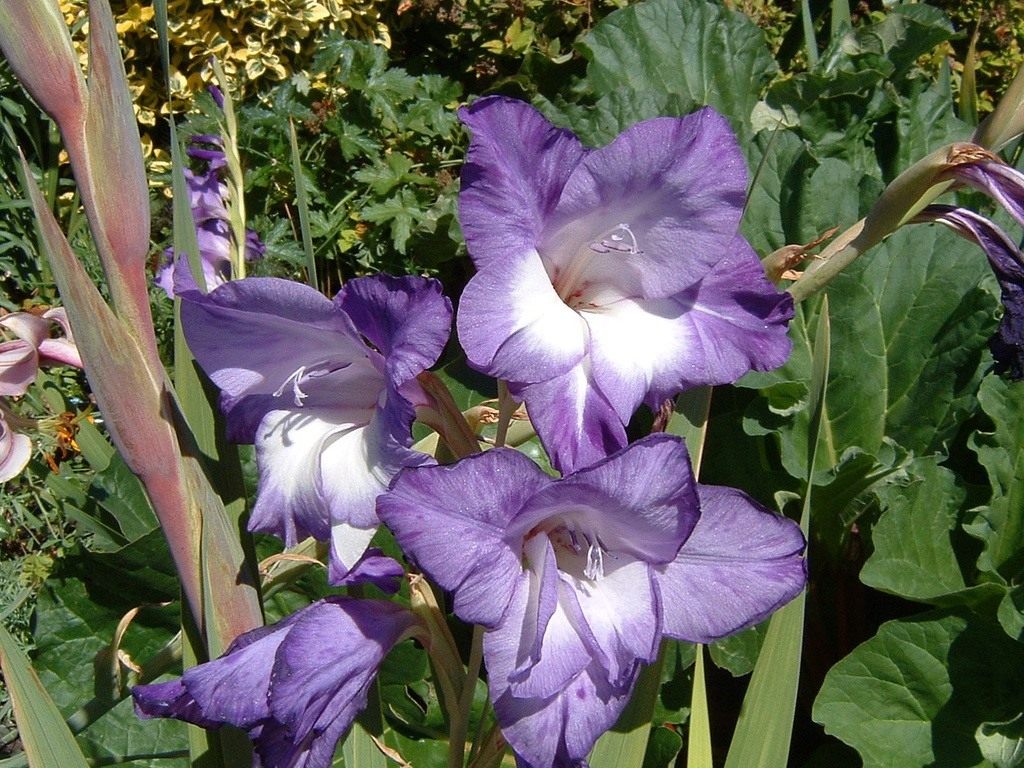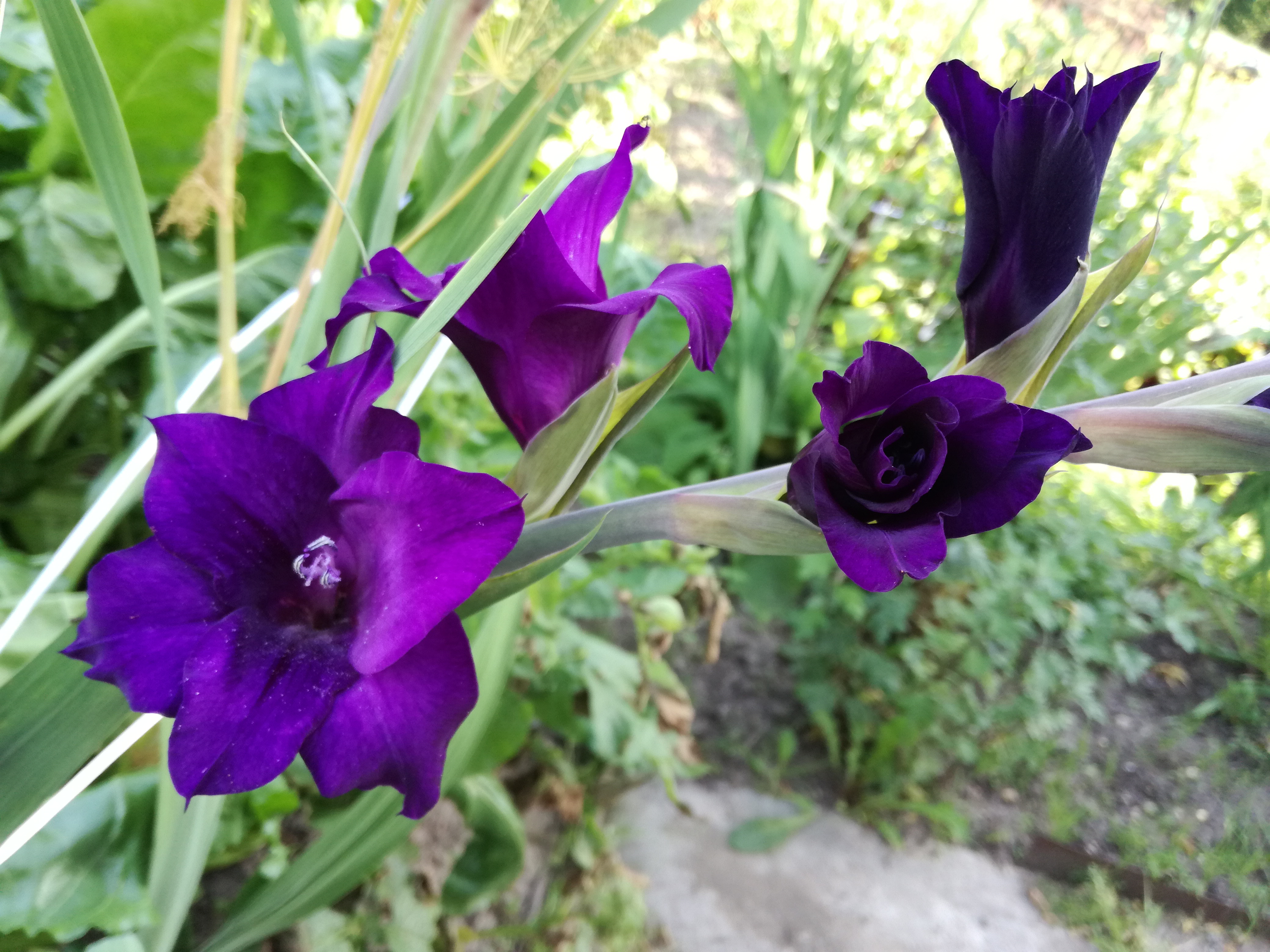Gladiolus is a summer flower belonging to the bulbous family, which brings joy to summer residents with the tenderness of its buds and its bright color. It begins to bloom from mid-July to almost the end of August. After that, if it is necessary to preserve the bulbs themselves, they are dug out of the ground and stored in a cold place, most often in a cellar or refrigerator. In the spring, they are again planted in their summer cottage.
But this raises the question: when is it necessary to get gladioli from the refrigerator for germination? This moment also needs to be analyzed in more detail.
How to store bulbs correctly?
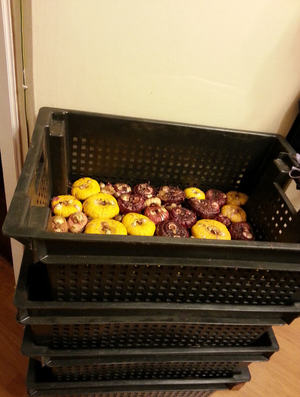 For gladioli to ascend next year, they need properly assemble and store.
For gladioli to ascend next year, they need properly assemble and store.
So, in mid-September, this plant finally fades and drops its color. During this period, they begin to collect the bulbs. To do this, the flower is carefully dug out of the soil, after which the planting material is dried at room temperature for about a month.
During storage of gladioli, in order to prevent the development of pathogenic bacteria, the collected bulbs should be pickled. For these purposes, the following hot solutions are used:
- a weak solution of potassium permanganate;
- phytosporin;
- chlorophos.
You can also use regular hot water... Planting material is immersed in any of these solutions for 20 minutes. Then, from the remaining stem of gladiolus, cut the blank, carefully dry it and put it away for storage. If a refrigerator is used for these purposes, then the bulbs are folded into a bag with holes and placed in the vegetable section. They should be checked twice a month.
When should the planting material be taken out of the refrigerator?
Storing the bulbs in such a cool place is considered very reliable, allowing you to control their quality throughout this period. It is best to get them out of the refrigerator in the spring for a month or a month and a half before planting gladioli in open ground. Usually 30-40 days is enough for the bulbs to germinate and form powerful shoots with a large supply of nutrients.
How to prepare gladioli for germination?
To make the germination of the bulbs as efficient and trouble-free as possible, you should strictly adhere to compliance with the technology of such a process.
Visual inspection
During inspection, planting material damaged during storage, as well as affected by rot and pathogens, is rejected.
Peeling the bulbs
After that, the gladioli are cleaned from the covering scales. This is done so that they do not interfere with sprouting arrows. In addition, rot and sore spots are immediately visible on the cleaned planting material. These bulbs must be eliminated. If there are small specks of fusarium lesions, you can try to plant such gladioli, but for this they should be treated. With a sharp knife, carefully remove the affected area to healthy tissue. Slices are sprinkled with crushed coal, can be activated, or smeared with brilliant green... Once they are dry, the disease cannot spread further.
Etching
Before planting, the bulbs are treated in a solution of a fungicide or insecticide, this is especially true if the flowers in the past year were sick a lot or were affected by thrips. You can hold the cleaned planting material for one hour in a solution of such drugs as:
- Fundozol;
- "Maksim".
Germinating gladioli before planting
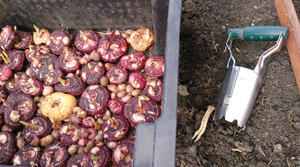 After carrying out all these manipulations, it remains only to germinate the bulbs before planting them in open ground. This is not necessary, but this should allow the flowers to bloom early.
After carrying out all these manipulations, it remains only to germinate the bulbs before planting them in open ground. This is not necessary, but this should allow the flowers to bloom early.
When to germinate gladioli? The best period for this is early or mid-April... The peeled and trimmed bulbs are laid out with the stalks upward in one layer in a box and placed in a dry and warm place with diffused sunlight. This will allow the planting material to sprout quickly and violently. Sprouted bulbs should be planted no later than May 15, which will allow the plants to actively grow and bloom profusely.
Landing in the ground
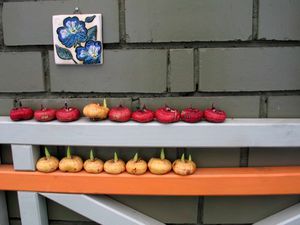 When planting gladioli, you must follow the necessary recommendations.
When planting gladioli, you must follow the necessary recommendations.
The plot for their cultivation should be light and sunny, and the soil should be light sandy loam, rich in humus.
Gladioli are not recommended to be planted in the same place for several years in a row, since over time, pathogenic microflora begins to accumulate in the soil, which can contribute to the occurrence of a disease in plants;
Highly it is harmful to plant these flowers next to garden crops, such as:
- radish;
- cabbage;
- horseradish;
- turnip;
- mustard leaf.
The planting depth depends on the size of the bulbs, as well as the type of soil: if the soil is light, then it is necessary to deepen them, focusing on four diameters; with heavier soil, planting is carried out with the smallest depth.
Planting material should be planted at a distance of 15 cm from each other, and the distance between rows should be 25 cm.
Wells are pre-watered with water and pour a layer of ordinary or river sand... Having lowered the flower into the hole, it is sprinkled on top with another layer of sand, after which it is covered with earth. Shoot shoots should be expected in 2 - 3 weeks after that.
As soon as the shoots reach a height of 5 cm, the plants are fertilized with a layer of humus. This protects the flowers from pathogens and promotes moisture retention, which is very important in hot weather.
Plants are watered in the morning and in the evening, and the water should be poured in such a way that it does not fall under the stems and roots. Once the moisture has slightly evaporated, it is necessary loosen the soil around the flower.
Thus, gladioli bulbs can be stored in the refrigerator to be planted again next year. But this must be done correctly so that the planting material does not rot and get sick. Gladioli should also be removed from the refrigerator for germination on time, in this case the plant blooms much earlier and more abundantly.
